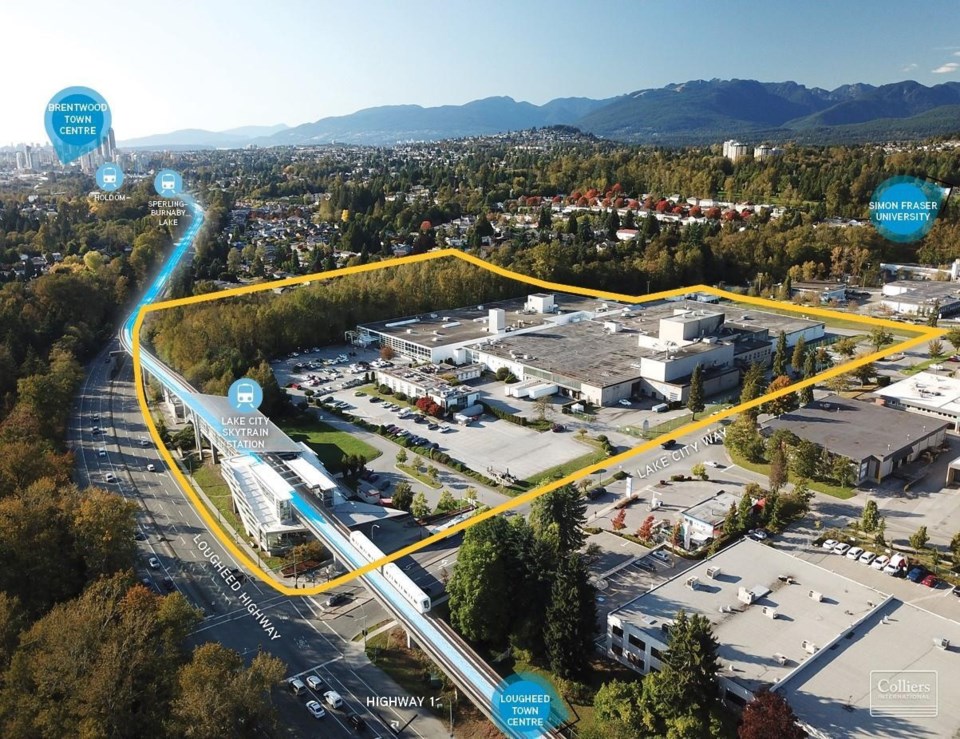Metro Vancouver industrial tenants, especially those in the distribution business, should brace for higher leasing costs because of extremely tight vacancy rates, vanishing land and a developer switch to selling rather than leasing new space, a new report cautions.
Tenants could see ongoing annual leases hikes of 2.5 per cent to 4 per cent as there are often multiple offers for leased space, according to the Metro Vancouver Industrial Overview released November 5 by Avison Young’s Vancouver office. The biggest demand is for e-commerce distribution space, but film production is also competing with traditional warehouse tenants for scant leases.
A huge amount of new industrial space is underway, with 4.4 million square feet built in 2019 and another 3.3 million square feet added so far this year, but the vacancy rate now averages 1 per cent or less in nine suburban markets, including Richmond, Surrey and Burnaby, and averages 1.2 per cent across the region, the lowest level in North America.
A key reason is that half of the new space is being built to be sold as strata, not rented, and strata developments are accelerating as land costs climb.
“ Thanks to rapidly appreciating industrial land costs since 2015, a bias towards strata development has skewed the new development being delivered through 2021 to include only limited amounts of new space for lease,” Avison Young noted.
In some cases the developing of lease projects on land purchased at today’s prices will lead to developers taking a loss, the agency noted.
According to a study of 10 major industrial land sales in 2020, the average land cost is now north of $2.4 million per acre and has spiked well above $3 million per acre in Langley, where the Mitchell Group for example, paid $9.25 million for a 2.5-acre site on 83rd Avenue in the third quarter.
These prices are about double what they were five years ago, but it has not cooled investment demand. Through the first nine months of this year, industrial asset sales totalled $1.02 billion, down only marginally from the same period in pre-pandemic 2019.
As Avison Young notes, developers who recently purchased land see strata as the best chance to recoup their costs, adding that most of the new lease space is rising from land purchased before the recent price surge.
“ This lack of leasable space translates into fewer options for tenants and continued rental rate appreciation as ongoing supply constraints limits availability,” Avison Young stated.
At the end of 2019, the average industrial lease rate in Metro Vancouver was $13.15 per square foot, up 10 per cent from a year earlier. As of the third quarter of this year, it was $13.88 per square foot, but averaged $17.48 per square foot in Vancouver, and $16.57 in North Vancouver, where the industrial vacancy rate is zero. In the largest industrial markets of Surrey and Richmond, per-square-foot leases costs are now north of $12.20 per square foot.
This compares with an average of $12.00 per square foot CAD in Seattle, but lower than the $14.50 CAD average in Los Angeles and $15.74 CAD in San Diego, according to a separate survey by CBRE.
The acute shortage of industrial land points to rising costs for the dwindling amount of leased space.
The Metro Vancouver Regional Industrial Lands Strategy Report, released June 2020, found the region, as of 2015, has approximately 28,000 acres of industrial land, but that 80 per cent of that had already been developed.
“Demand is outpacing the market’s ability to provide space,” report warned. “Businesses are faced with either renewing their lease at notably higher rates, or relocating further away from the region’s core markets.”



